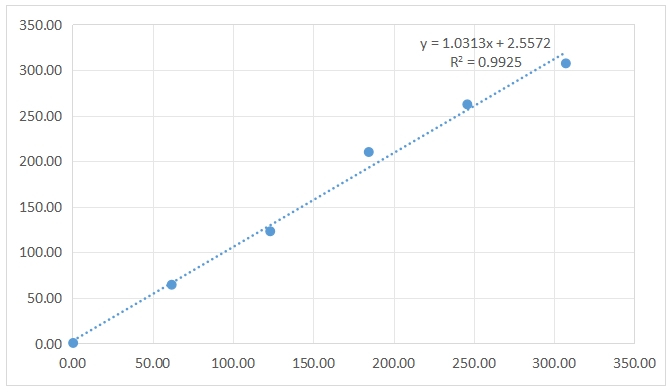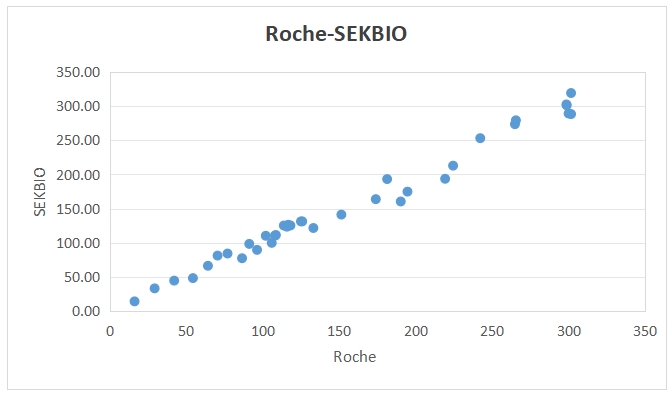TT4
Total Thyroxine, commonly referred to as Total T4 or simply T4, is a crucial hormone produced by the thyroid gland. It plays a central role in regulating metabolism and is an essential component of thyroid function tests. Here's a detailed introduction to Total Thyroxine:
Overview: Total Thyroxine is a hormone synthesized primarily in the thyroid gland, located in the neck. It is one of the two major hormones secreted by the thyroid, the other being Triiodothyronine (T3). T4 is a tyrosine-based hormone with four iodine atoms attached, hence the name "tetraiodothyronine." While T3 is more biologically active, T4 is produced in much larger quantities and serves as a reservoir from which T3 is derived through peripheral conversion in tissues throughout the body.
Synthesis and Release: The synthesis of T4 involves the uptake of iodine by the thyroid gland, followed by the oxidation and iodination of tyrosine residues in thyroglobulin, a glycoprotein stored within the colloid of thyroid follicles. Stimulated by Thyroid-Stimulating Hormone (TSH) from the pituitary gland, T4 and T3 are then released into the bloodstream.
Function: T4, though less potent than T3, influences nearly every cell in the body by regulating basal metabolic rate, affecting growth and development, and impacting the metabolism of carbohydrates, fats, and proteins. By binding to nuclear receptors inside cells, it modulates gene expression and, consequently, cellular activity.
Binding Proteins: In circulation, more than 99% of T4 is bound to transport proteins, primarily Thyroxine-Binding Globulin (TBG), with lesser amounts bound to Transthyretin and Albumin. Only a tiny fraction, known as Free T4 (FT4), circulates unbound and is considered the bioavailable form that enters cells to exert its biological effects.
Clinical Significance: Measurement of Total T4 is an important part of assessing thyroid function, often alongside TSH and Free T4 levels. Elevated Total T4 levels can indicate hyperthyroidism, a condition characterized by an overactive thyroid gland, leading to symptoms like weight loss, anxiety, and heat intolerance. Conversely, low levels may point to hypothyroidism, where the thyroid gland is underactive, causing symptoms such as fatigue, weight gain, and cold sensitivity. However, interpretation of Total T4 levels must take into account variations due to changes in binding proteins, such as in pregnancy, liver disease, or use of certain medications.
Testing: Laboratory testing for Total T4 is commonly done using immunoassay techniques. Results are interpreted in conjunction with clinical presentation and other thyroid function tests to diagnose and monitor thyroid disorders. Normal reference ranges for Total T4 vary among laboratories but typically fall within 4.5-12.0 micrograms per deciliter (μg/dL) or 66-177 nanomoles per liter (nmol/L).
In summary, Total Thyroxine (T4) is a vital hormone central to maintaining metabolic homeostasis, and its accurate measurement is essential for diagnosing and managing thyroid dysfunction.
The performance data of the TT4 Rapid Quantitative Test Kit(CLIA)
Manufacturer | SEKBIO |
Parameter | TT4 |
Linearity | 5.40-320.0 nmol/L |
Detection limit | 5.40 nmol/L |
benchmark product | Roche |
Test principle and procedure | TT4: Add 30 μl of sample + 30 μl of Ra incubation for 5 minutes without washing+30 μl of Ra + 30 μl of Rc incubation for 10 minutes. Wash with 200 μl of washing solution. Finally, add 100 μl of A + 100 μl of B. |
Six point calibration test results
Sample Concentration( nmol/L ) |
RLU | Average | CV | S/N | ||
0.00 | 2,199,337 | 2,293,369 | 2,243,598 | 2,245,435 | 2.10% | / |
5.48 | 586,320 | 596,203 | 580,019 | 587,514 | 1.39% | 3.82 |
28.58 | 234,431 | 236,440 | 232,672 | 234,514 | 0.80% | 9.57 |
44.30 | 168,020 | 208,770 | 204,427 | 193,739 | 11.55% | 11.59 |
135.64 | 97,330 | 98,275 | 100,411 | 98,672 | 1.60% | 22.76 |
318.50 | 45,159 | 45,953 | 44,855 | 45,322 | 1.25% | 49.54 |
Precision
Sample | RLU | Concentration | Sample | RLU | Concentration |
28.58 | 219,725 | 32.51 |
135.64 | 95,040 | 128.23 |
212,645 | 34.53 | 98,070 | 122.58 | ||
214,107 | 34.10 | 94,970 | 128.36 | ||
218,788 | 32.77 | 95,868 | 126.65 | ||
208,711 | 35.73 | 94,403 | 129.46 | ||
209,895 | 35.36 | 94,809 | 128.67 | ||
217,311 | 33.82 | 94,942 | 128.41 | ||
213,213 | 34.36 | 97,008 | 124.52 | ||
212,585 | 34.55 | 96,848 | 124.81 | ||
211,734 | 34.25 | 97,545 | 123.53 | ||
AVE | 213,871 | 34.20 | AVE | 95,950 | 126.52 |
SD | 3665.55 | 1.00 | SD | 1311.09 | 2.46 |
CV | 1.71% | 2.92% | CV | 1.37% | 1.95% |
Limit of detection
Sample | RLU | Concentration | ||
Ag Diluent | 1,753,629 | 1,784,544 | 0.05 | 0.04 |
1,792,472 | 1,798,134 | 0.04 | 0.04 | |
1,838,266 | 1,788,974 | 0.03 | 0.04 | |
1,791,595 | 1,841,043 | 0.04 | 0.03 | |
1,835,182 | 1,789,517 | 0.03 | 0.04 | |
1,817,957 | 1,772,404 | 0.03 | 0.04 | |
1,753,412 | 1,797,358 | 0.05 | 0.04 | |
1,807,751 | 1,814,618 | 0.04 | 0.04 | |
1,799,959 | 1,825,283 | 0.04 | 0.03 | |
1,805,167 | 1,798,000 | 0.04 | 0.04 | |
AVE | 1,800,263 | 0.038 | ||
SD | 24432.22 | 0.005 | ||
AVE-2*SD | 0.028 | |||
Linear
Sample( nmol/L ) | Dilution ratio | Concentration value | Average | ||
307.29 | 1.0 | 307.89 | 304.97 | 309.01 | 307.29 |
245.91 | 0.8 | 262.68 | 265.11 | 259.17 | 262.31 |
184.54 | 0.6 | 190.29 | 227.27 | 203.25 | 209.88 |
123.17 | 0.4 | 110.82 | 128.85 | 130.68 | 123.25 |
61.79 | 0.2 | 64.68 | 64.40 | 63.91 | 64.33 |
0.42 | 0.0 | 0.43 | 0.38 | 0.46 | 0.42 |

Method Comparison



















